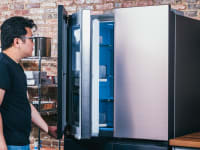What fridge style fits you best? Read this before you buy
From top-freezer to column and more
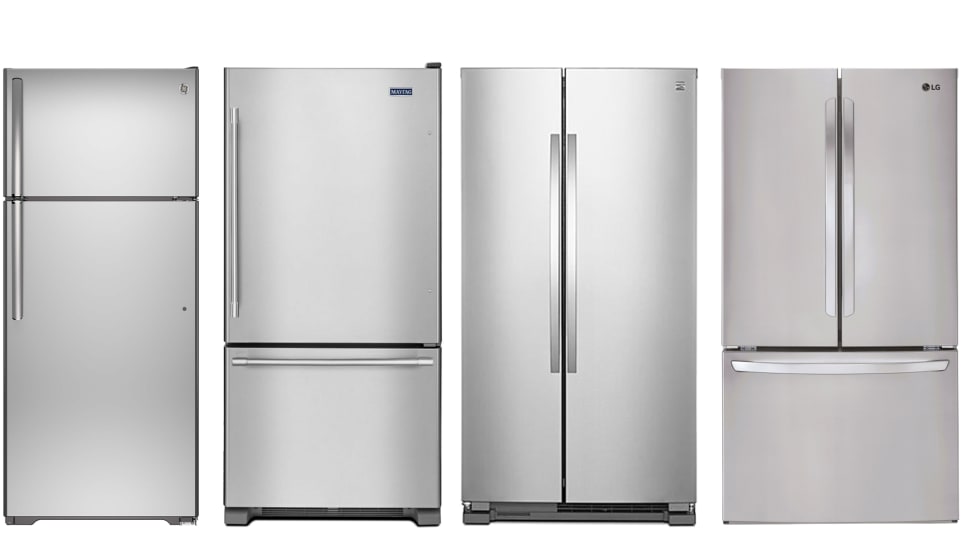 Credit:
GE, Whirlpool, Kenmore, and LG
Credit:
GE, Whirlpool, Kenmore, and LG
Products are chosen independently by our editors. Purchases made through our links may earn us a commission.
Most people don't spend their days ranking refrigerators in their head like they're trying to optimize a fantasy football team. Most people rarely think about refrigerators at all. As Reviewed’s resident fridge aficionado, I am thinking about them for you.
For those of you who need to buy a new fridge, I’m here to help. You may have a couple criteria you’re looking for or you may want to try a new format on a whim. Do your research before making this significant purchase, and please don’t pay more for one that has special features you don’t need, just because a salesperson tells you that’s how all fridges are today.
Here's a brief primer on different fridge types, what each excels at, where they lag behind, and what features to keep an eye out for.
Top-freezer: A classic style
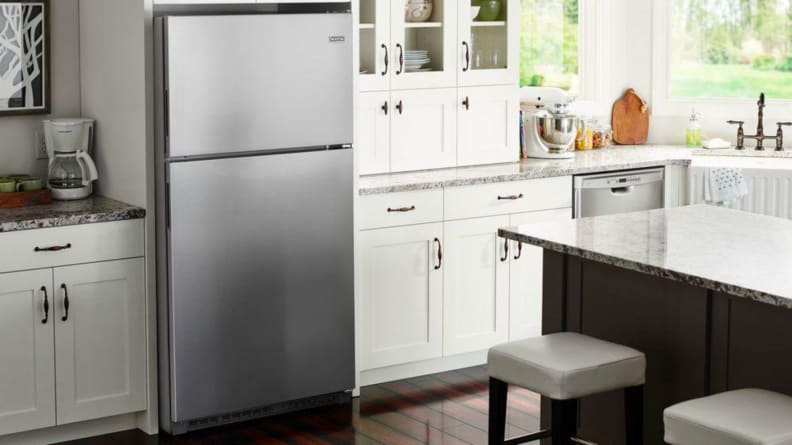
Top-freezers tend to be budget options, and the difference in quality between a good one and a bad on can be significant.
Top-freezers are a classic design that anyone who's renting an apartment is likely intimately familiar with. As this fridge type’s name clearly suggests, the freezer compartment sits at the top of the unit with a refrigerated compartment underneath.
While there are definitely some excellent top-freezers out there, the style as a whole can vary wildly when it comes to performance. At its best, it’s a no-frills option for folks who just need a basic fridge.
If the one in your apartment is an inconsistent mess, with defrost cycles so chaotic they melt your ice cubes and freezer burn everything into astronaut food in a matter of days, it’s likely your landlord cheaped out.
If you like this style, give it another shot. We like the Hisense HRB171N6ASE and Hotpoint HPS16BTNRWW.
Bottom-freezer: The basic fridge with a better freezer
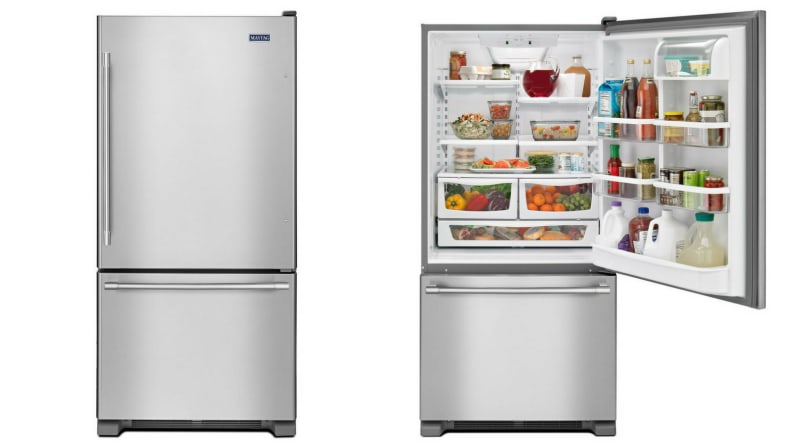
A refrigerator with a bottom freezer puts the items you use most at eye level.
Bottom-freezers put a predictable 180° spin on the top-freezer formula by keeping the freezer compartment on the ground, almost exclusively as a drawer. This design is good for anyone who's had one too many frozen chicken cutlets slide out of an overstuffed freezer and directly onto their toes.
The bottom-freezer drawer can sometimes make it a bit difficult to keep things organized, as it's less likely to have shelving or compartments than other fridge styles, but at least you can dig around for what you want without needing steel-toe boots. While French-doors offer most of these same benefits (and have better features, too), bottom-freezers have the advantage of costing much less on average.
If you like this style, try the GE GDE25EYKFS and Hisense HRB171N6ASE.
Side-by-side: For easy access to both fridge and freezer
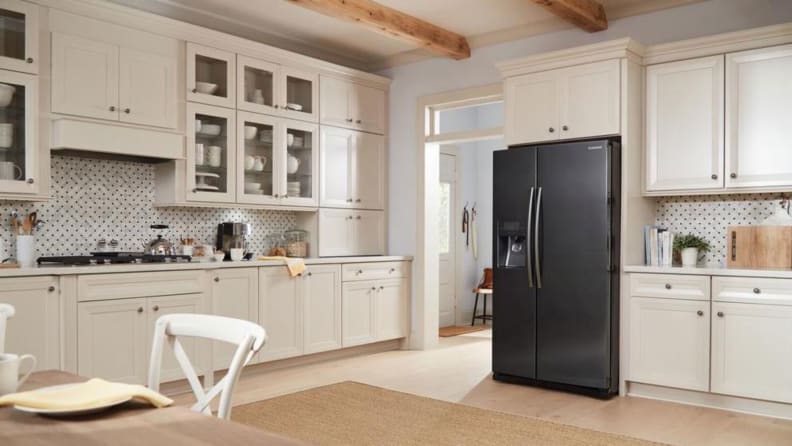
Side-by-sides provide easy access to items in both the fridge and freezer, but neither compartment is particularly wide.
The main selling point of a side-by-side is that it lets you access freezer items without stooping down, as you'd need to do with a French-door or bottom-freezer fridge. It also doesn't need as much space for the door to swing open compared to top- or bottom-freezer models.
The downside, of course, is that the two compartments are significantly thinner than in other styles of fridge. This can make it difficult or impossible to store sheet pans, frozen pizzas, or wide platters.
Another more subtle issue is that the refrigerator compartment of a side-by-side may have a pronounced temperature differential between its top and bottom. Most fridges pipe in the cold air through a vent at the top center of the back of the fridge, at which point it circulates throughout the fridge. This means that items stored closer to this vent will be colder and items further away will be warmer—sometimes dangerously so, especially in overstuffed fridges that impede air circulation.
Since the fridge compartment is so high in a side-by-side, this style of fridge tends to have more problems with this than any other.
If you like this side-by-side look and don’t eat a lot of frozen pizza, try the Frigidaire FRSS2623AS and Frigidaire Gallery GRSC2352AF
French-door: Easy accessibility and a great look
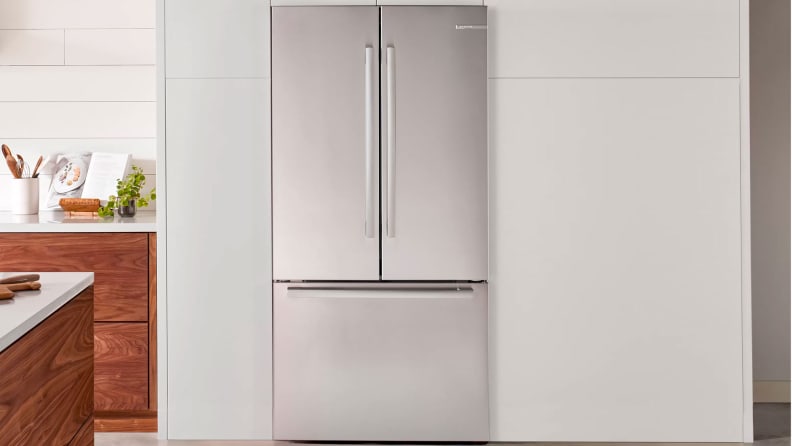
French-door fridges often have better usability and feature sets than other styles of fridge.
French-door refrigerators mix many of the above design elements into a single unit. The namesake French doors look like they're from a side-by-side but open into the same large refrigerated compartment.
Underneath is a freezer drawer, similar in design to what you'd find on a bottom-freezer. French doors have two doors covering their fridge compartment and a freezer drawer underneath, though we've seen some models with four doors.
French-door fridges also seem to have some of the widest feature sets across the appliance space, offering everything from through-the-door ice and water dispensers to custom-temperature flex drawers.
If you like the French-door look and don’t mind spending a bit more, try the Frigidaire Gallery GRQC2255BF and Bosch B36FD50SNS.
Column: For those with specific needs
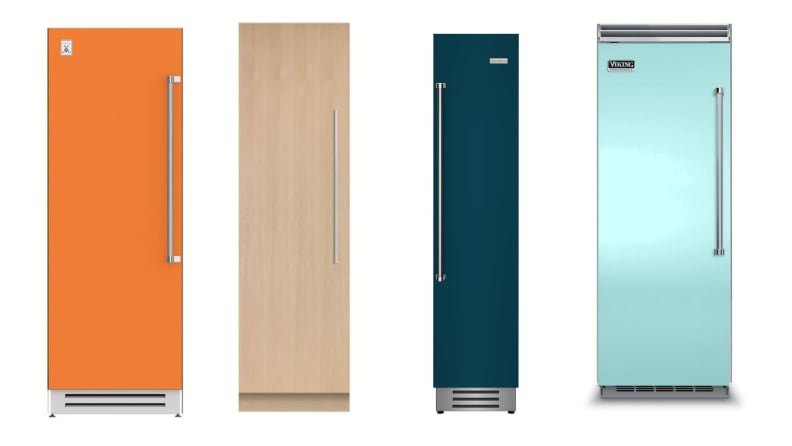
Column fridges can come in all shapes, sizes, colors, and designs.
Columns represent the ultimate in fridge customization, and they're trending this year as people spend more time at home. You can choose if you want any given column fridge to be either a fridge or a freezer, then specify the exact width you're looking for.
Column fridges are often built-in and concealed behind panels that match the rest of your cabinetry. The general idea behind column fridges is to have a few of them in your kitchen, where each one is custom-tailored to whatever items you're storing in them. For example, some cater to wine connoisseurs, with precise temperature and humidity regulation as well as added vibration, to ensure your wine is kept in the perfect conditions.
Of course, customizability comes at a price: Column fridges are more expensive than ready-made fridges.
If you have customized refrigeration needs, try the JennAir JBRFR24IGX and Frigidaire Professional Series FPRU19F8WF.
Counter-depth: For those with an existing enclosure or a smaller kitchen
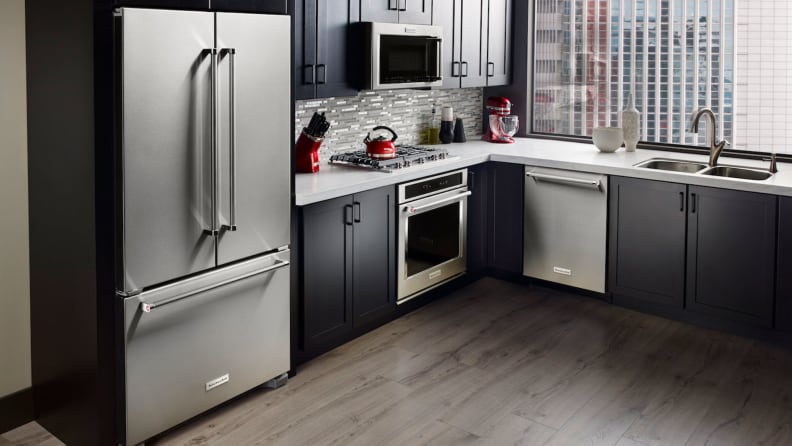
Any fridge type can also be counter-depth, roughly 26" deep, to help it sit more flush with your existing cabinetry.
Counter-depth fridges aren't necessarily a style on their own—any of the above styles of fridge can also be counter-depth. Counter-depth fridges are typically 24 inches deep (not counting the doors or handles), which should line up flush with the rest of your cabinetry.
Here’s what this means: You can easily slot a counter-depth fridge into any existing enclosure you may have. They are also a great space-saver for small kitchens.
However, if you don't specifically need a counter-depth fridge, we advise staying away from them. Not only do they tend to be more expensive than a standard fridge, but they also can't offer nearly as much storage space as a full-size model.
If you need a counter-depth fridge, we like the Frigidaire Gallery Quattro GRQC2255BF and Bosch B36CD50SNS.
Other factors to consider before buying
The style of fridge isn't the only thing you need to consider when buying a fridge. Modern fridges are loaded with special features, some of which are unique to certain styles, like custom-temp flex drawers, advanced smart features, and faster, fancier ice cubes.
While all of these features have their own niche usefulness, it's best to only select fridges with the options you know you're going to use. Often these features come with a price hike attached and will often eat into the total overall storage space the fridge has to offer, so you'll both be paying more and getting less if you don't end up using them.
More on refrigerators
- The Best Refrigerators We've Tested
- How cold should your refrigerator be?
- Refrigerator power outage tip: Put a quarter on a cup
- The surprising perks of bottom-freezer refrigerators
- The Best French-Door Refrigerators We've Tested
- 4 best garage refrigerators to store extra drinks and food
- How we test refrigerators in the Reviewed test labs
- The Best Side-by-side Refrigerators We've Tested
- The Best Top-Freezer Refrigerators We've Tested
- The Best Counter-Depth Refrigerators We've Tested

